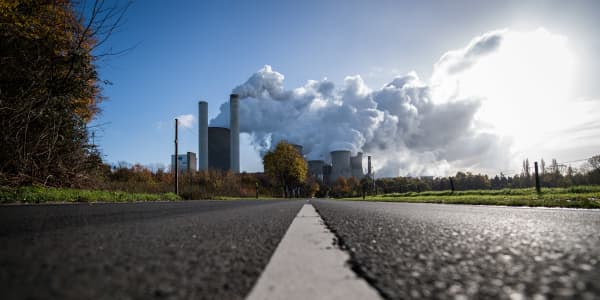The towns and cities we live and work in may seem like hives of activity, but a closer look shows that's not always the case. Whether it's an empty building or scrap of land, pockets of unused, dilapidated and overgrown space punctuate the urban environment.
And while these areas can often become unloved eyesores, they also offer an opportunity for the development of sustainable design projects.
Take the area of Peckham, in southeast London. There, French multinational ENGIE is planning to turn a site formerly used as garage space into 23 homes.
Designed to be low carbon, the properties will include features such as "enhanced thermal insulation levels and air tightness" to cut energy usage and, in theory, reduce utility bills for people living there. In addition, solar panels are to be installed on the scheme's roof.
In a statement issued earlier this month ENGIE UK's Divisional CEO Colin Macpherson said the regeneration of vacant land could "play an instrumental role in the provision of much-needed new homes and offers a prime opportunity to future proof our housing stock."
Elevated rail lines, former power stations and a meat market
The reimagining of existing structures and space is not restricted to residential schemes. The High Line, in New York City, saw an elevated rail line turned into a public park, for example.
Back in London, one of the world's most prestigious art galleries, the Tate Modern, is located in a former power station on the banks of the River Thames, while an unused section of Smithfield Market — a meat and poultry trading hub — will soon become the Museum of London's new home.
Projects such as these not only repurpose older structures but have the capacity to integrate renewable energy technologies too: in 2015, solar panels were installed on the rooftop of Tate Modern, enabling some of the site to be powered by the sun.
The common thread linking these projects is that they have all been designed to regenerate existing space, such as unoccupied buildings and brownfield sites.
Due to a renewed focus on sustainable development and the environment, this is a trend that could become increasingly important in the years ahead.
Charlene Clear is head of products and services at BREEAM, a "sustainability assessment method" from the Building Research Establishment that covers buildings, infrastructure and master-planning projects.
Speaking to CNBC in a phone interview, she stressed the importance of adopting a flexible and adaptable attitude when it came to re-purposing these kinds of areas.
"Any local authority should be looking at the land within their catchment, their remit, and thinking about what's the best use of that land given the specific demands and priorities for that area," she said.
On the issue of sustainability, Clear went on to emphasize the need to focus, in the first instance, on aspects relating to energy efficiency, a building's fabric and doing "what you can do" with features such as insulation and draft proofing.
As to where technology could play a role, she said: "For me, personally, I would say the future is more around understanding how your building is performing and building intelligence."
"So, thinking about sensors, thinking about … internet of things type technologies, where you … just understand … how buildings are performing much better, and then we are able to attune the technologies to suit the actual need and use of the building," she added.




